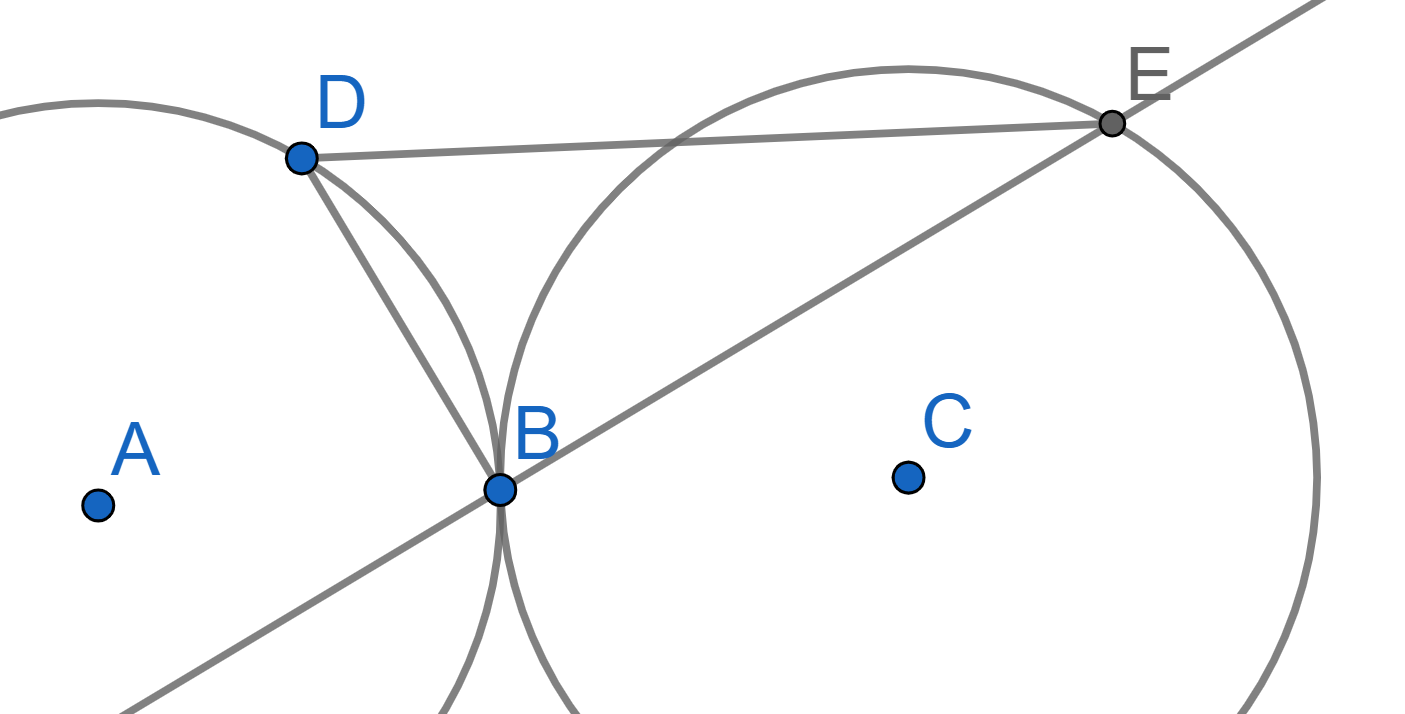Problems
The circles \(\sigma_1\) and \(\sigma_2\) intersect at points \(A\) and \(B\). At the point \(A\) to \(\sigma_1\) and \(\sigma_2\), respectively, the tangents \(l_1\) and \(l_2\) are drawn. The points \(T_1\) and \(T_2\) are chosen respectively on the circles \(\sigma_1\) and \(\sigma_2\) so that the angular measures of the arcs \(T_1A\) and \(AT_2\) are equal (the arc value of the circle is considered in the clockwise direction). The tangent \(t_1\) at the point \(T_1\) to the circle \(\sigma_1\) intersects \(l_2\) at the point \(M_1\). Similarly, the tangent \(t_2\) at the point \(T_2\) to the circle \(\sigma_2\) intersects \(l_1\) at the point \(M_2\). Prove that the midpoints of the segments \(M_1M_2\) are on the same line, independent of the positions of the points \(T_1, T_2\).
The point \(A\) is fixed on a circle. Find the locus of the point \(X\) which divides the chords that end at point \(A\) in a \(1:2\) ratio, starting from the point \(A\).
Prove that, when a circle is translated it becomes a circle.
Two circles of radius \(R\) touch at point \(B\). On one of them, point \(D\) is chosen and on the other point \(E\) is chosen. These points have a property of \(\angle DBE = 90^{\circ}\). Prove that \(DE = 2R\).

Two circles of radius \(R\) intersect at points \(B\) and \(D\). Consider the perpendicular bisector of the segment \(BD\). This line meets the two circles again at points \(F\) and \(G\), both chosen on the same side of \(BD\). Prove that \[BD^2 + FG^2 = 4R^2.\]
Inside the rectangle \(ABCD\), the point \(E\) is taken. Prove that there exists a convex quadrilateral with perpendicular diagonals of lengths \(AB\) and \(BC\) whose sides are equal to \(AE\), \(BE\), \(CE\), \(DE\).
Prove that a circle transforms into a circle when it is rotated.
Prove that a convex \(n\)-gon is regular if and only if it is transformed into itself when it is rotated through an angle of \(360^{\circ}/n\) with respect to some point.
Prove that the triangle \(ABC\) is regular if and only if, by turning it by \(60^{\circ}\) (either clockwise or anticlockwise) with respect to point A, its vertex B moves to \(C\).
Two perpendicular straight lines are drawn through the centre of the square. Prove that their intersection points with the sides of a square form a square.